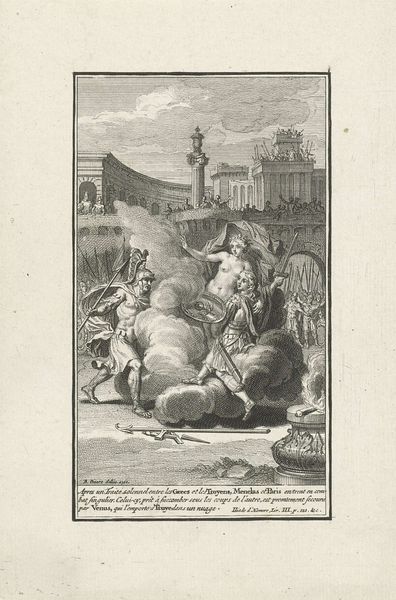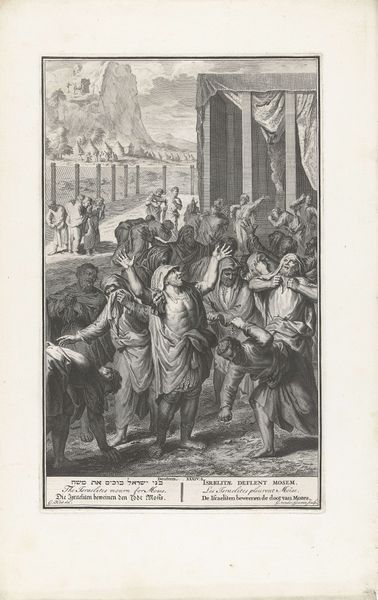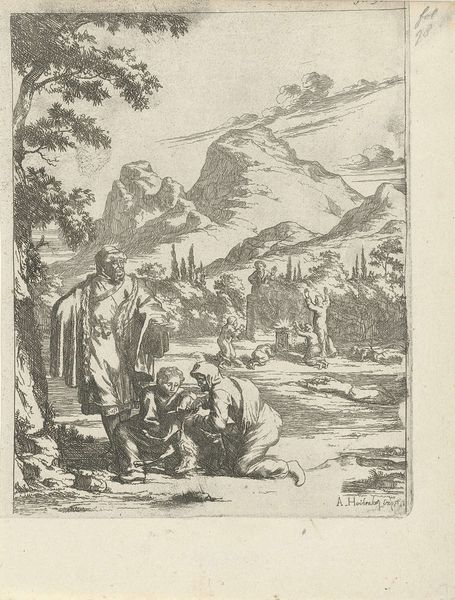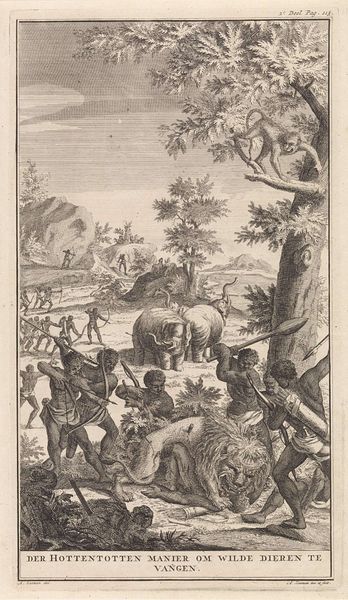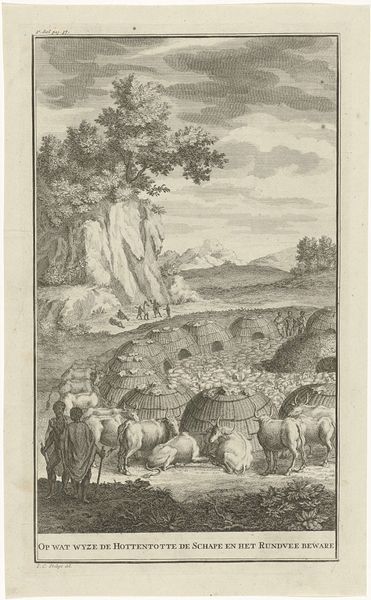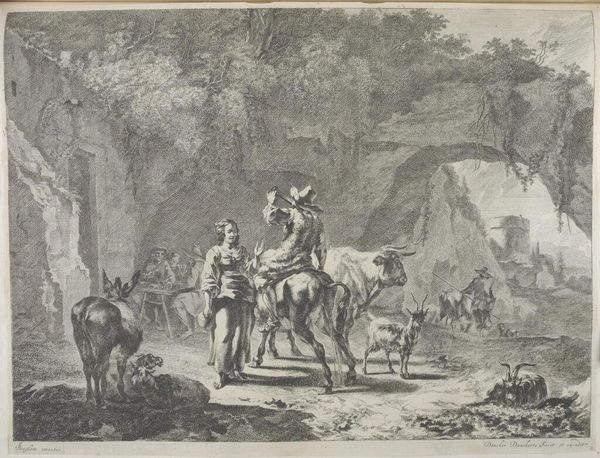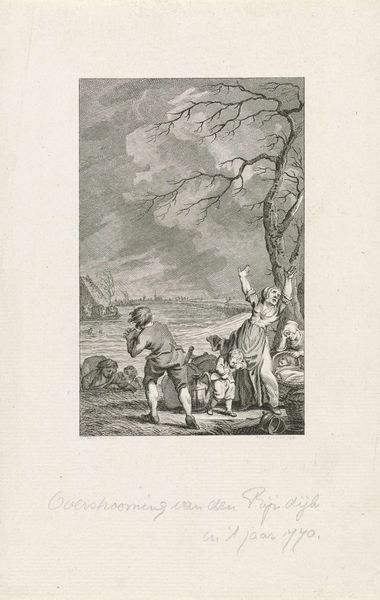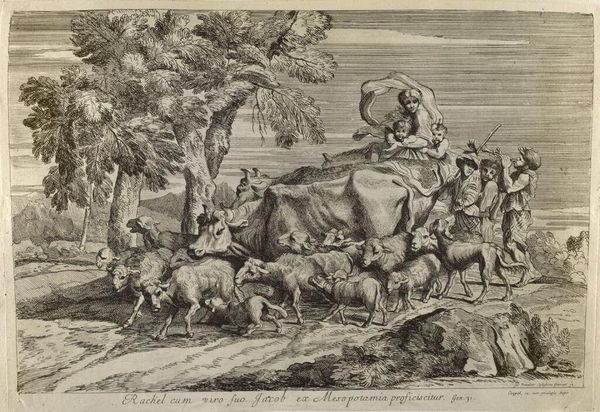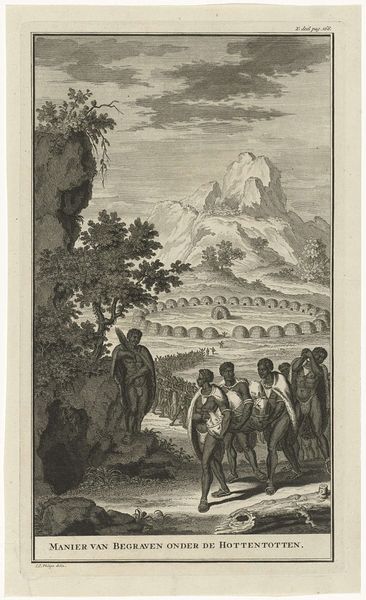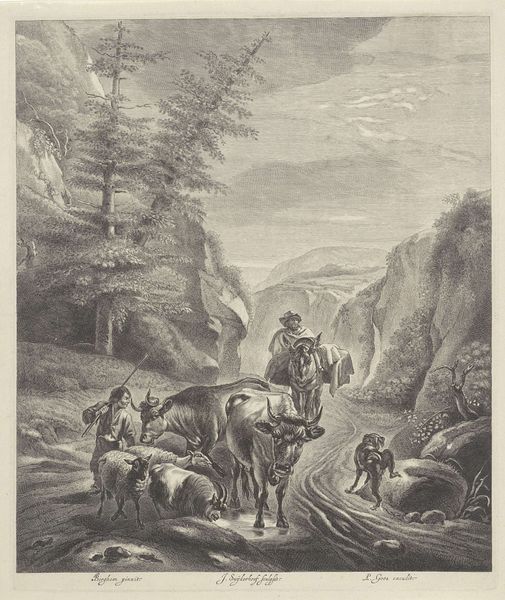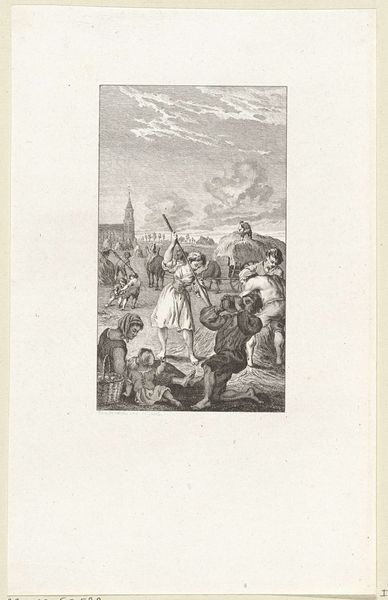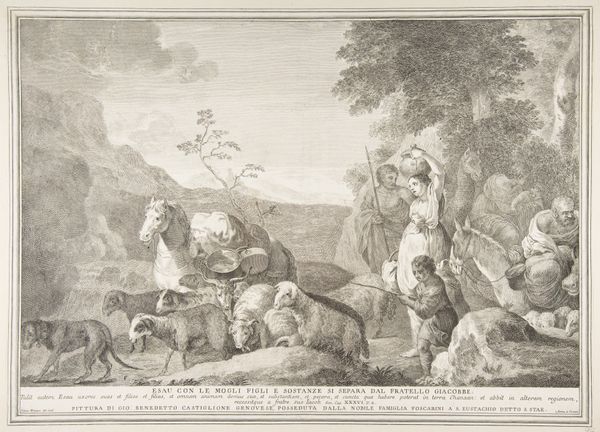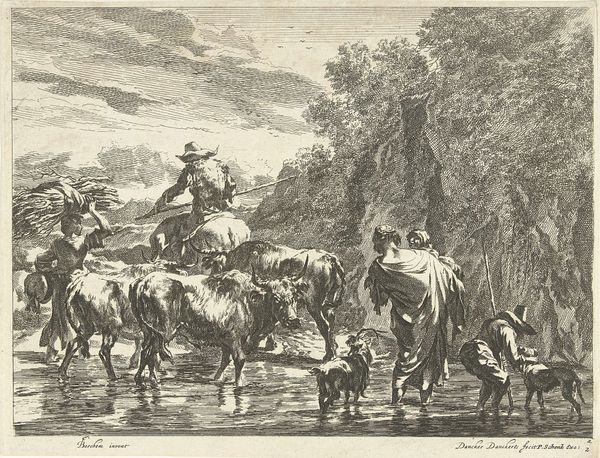
mixed-media, print, etching, engraving
#
mixed-media
#
narrative-art
#
dutch-golden-age
# print
#
etching
#
old engraving style
#
landscape
#
genre-painting
#
history-painting
#
engraving
Dimensions: height 288 mm, width 165 mm
Copyright: Rijks Museum: Open Domain
Editor: This etching, "Khoikhoi verhuizen hun kraal" by Jan Wandelaar, dating back to 1727, is currently held at the Rijksmuseum. I'm struck by the detailed depiction of labor and what seems to be a communal effort of relocation. What narrative or commentary do you see embedded within this print? Curator: That's an excellent starting point. While seemingly a depiction of everyday life, it's crucial to remember the context: this was created during a period of intense European colonialism. How do you think the artist's, or perhaps more broadly, the European perspective, might have shaped this image? Editor: I hadn’t considered the colonial lens so directly. Maybe the focus on labor is meant to portray them as primitive or perhaps industrious, thus attempting to justify colonial exploits? Curator: Precisely. The print carries the weight of ethnographic representation of that era, reflecting dominant power structures and prejudices. The seemingly objective depiction naturalizes a specific gaze, influencing how viewers understand this group of people. The landscape itself, while seemingly natural, is framed within a narrative of dominance. Who is dictating this narrative? Whose perspective prevails? Editor: It's uncomfortable to think that what I initially saw as a simple depiction is actually loaded with colonial implications. What should contemporary viewers take away from pieces like this? Curator: Discomfort is productive! Recognizing these power dynamics, analyzing the visual language employed, and acknowledging the historical context are vital. By deconstructing these images, we can critically examine the legacy of colonialism and its impact on representation. How does art perpetuate these inequalities and how can it disrupt it? Editor: So, engaging with this artwork becomes a exercise in questioning the motives and assumptions that underpin its creation and reception. I’ll never look at historical art quite the same way again! Curator: Indeed. Our engagement is part of an ongoing critical dialogue, understanding how art participates in shaping, reflecting, and also potentially challenging societal norms.
Comments
No comments
Be the first to comment and join the conversation on the ultimate creative platform.
